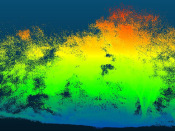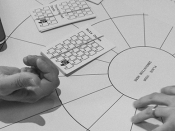José Afonso with Stergios Amarantidis, Israel Matute and Ciro Pappalardo (FCUL e Instituto de Astrofísica e Ciências do Espaço).
The epoch of first light in the Universe, or Epoch of Reionization (EoR), is one of the most exciting frontiers in current astrophysical knowledge. A range of exciting instruments and telescopes, with revolutionary capabilities in terms of sensitivity and resolution, have started or will soon start observations, finally allowing to explore the first Gyr of structure formation in the Universe, in particular, through the detection and study of the earliest manifestations of the AGN phenomenon. The recent detection of powerful quasars at the very edge of the Epoch of Reionisation imply an amazingly rapid growth, previously considered impossible, of supermassive black holes, and suggest that the observation of even earlier counterparts is within our grasp.
In order to understand how future facilities such as Athena or SKA and SKA-precursors can be optimised to reveal these earliest AGN, we are exploring state-of-the-art models of galaxy formation and evolution. This work is showing us how to reach the highest redshifts, and, as a result, we have recently compiled a list of candidates for the most distant radio-selected AGN ever found. This research also demonstrates the importance of exploring the most powerful telescope currently in operation, the Atacama Large Millimetre Array (ALMA), for the efficient determination of the redshift to very distant sources - in particular if they are not selected by their bright optical or near-infrared emission. The activity of PACE, the Portuguese ALMA Centre of Expertise, hosted by the Institute of Astrophysics and Space Sciences, has been fundamental to explore one of the most powerful telescopes in operation.









